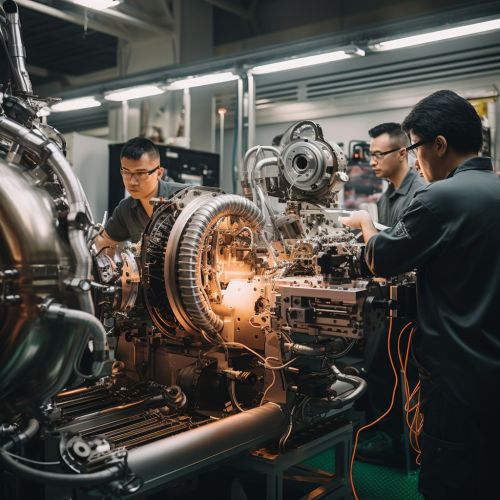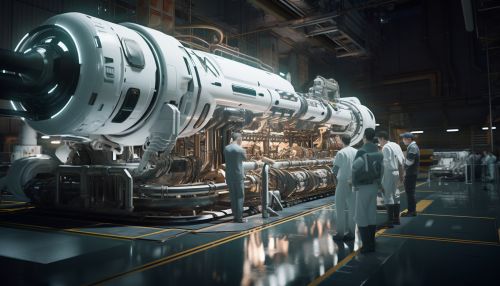Reliability Engineering
Introduction
Reliability Engineering is a specialized discipline of engineering that emphasizes the ability of equipment to perform without failure. A failure is defined as the loss of a desired function under stated conditions. Reliability is quantitatively evaluated as a probability that a device, system or process will perform its intended function without failure for a specified period of time under stated conditions.


History
The concept of reliability has its roots in the early 20th century, when manufacturers started to realize the cost implications of product failures. The discipline of reliability engineering as we know it today, however, did not emerge until the 1940s, during World War II. The military needed to ensure the reliability of their equipment, which led to the development of formalized reliability techniques and the establishment of the discipline of reliability engineering.
Principles of Reliability Engineering
Reliability engineering is based on a number of key principles. These include the understanding of failure modes, the use of probabilistic methods to predict failures, and the application of design and process controls to prevent failures.
Understanding Failure Modes
A key aspect of reliability engineering is understanding how and why products or systems fail. This is achieved through Failure Mode and Effects Analysis (FMEA), a systematic method for identifying potential failure modes, determining their effect on the operation of the product, and identifying actions to mitigate the failures.
Probabilistic Methods
Reliability engineering uses probabilistic methods to predict and manage the risk of failure. These methods include reliability prediction models, which use statistical data to predict the likelihood of failure, and reliability growth models, which track changes in reliability over time.
Design and Process Controls
Reliability engineering also involves the application of design and process controls to prevent failures. These controls include robust design practices, which aim to minimize the impact of variability in materials and manufacturing processes on product performance, and process control techniques, which monitor and control the manufacturing process to ensure consistent product quality.
Reliability Engineering Techniques
There are several techniques that are commonly used in reliability engineering. These include reliability prediction, reliability testing, and reliability modeling.
Reliability Prediction
Reliability prediction is a technique used to estimate the reliability of a product or system before it is manufactured. This is typically done using statistical methods based on historical failure data. The output of a reliability prediction is usually a probability that the product or system will perform its intended function without failure over a specified period of time.
Reliability Testing
Reliability testing is a technique used to validate the reliability predictions and to identify potential failure modes. This is done by subjecting the product or system to a series of tests that simulate the conditions it will experience during its operational life. The data collected during these tests is then used to update the reliability predictions and to develop strategies to mitigate the identified failure modes.
Reliability Modeling
Reliability modeling is a technique used to represent the reliability characteristics of a product or system. This is typically done using mathematical models that describe the failure behavior of the product or system. These models can be used to predict the impact of design changes on reliability, to optimize maintenance strategies, and to support decision-making processes.
Applications of Reliability Engineering
Reliability engineering is applied in a wide range of industries, including aerospace, automotive, electronics, power generation, and telecommunications. In these industries, reliability engineering is used to ensure that products and systems perform their intended function without failure, thereby reducing downtime, increasing customer satisfaction, and reducing costs.
In the aerospace industry, for example, reliability engineering is used to ensure the reliability of aircraft systems, such as the avionics, engines, and flight control systems. This is critical to ensure the safety of the aircraft and its passengers.
In the automotive industry, reliability engineering is used to ensure the reliability of vehicle systems, such as the engine, transmission, and braking systems. This is important to ensure the safety of the vehicle and its occupants, and to reduce the likelihood of vehicle breakdowns.
In the electronics industry, reliability engineering is used to ensure the reliability of electronic devices, such as computers, smartphones, and televisions. This is important to ensure the performance of these devices and to reduce the likelihood of device failures.
In the power generation industry, reliability engineering is used to ensure the reliability of power plants and power distribution systems. This is critical to ensure the continuous supply of electricity and to prevent power outages.
In the telecommunications industry, reliability engineering is used to ensure the reliability of telecommunications networks and equipment. This is important to ensure the quality of telecommunications services and to prevent network outages.
Future of Reliability Engineering
The future of reliability engineering is likely to be shaped by advances in technology and changes in societal expectations. These include the increasing complexity of products and systems, the growing importance of sustainability, and the rising demand for high-quality products and services.
The increasing complexity of products and systems is likely to drive the need for more sophisticated reliability engineering techniques. These may include the use of advanced predictive analytics, machine learning, and artificial intelligence to predict and manage the risk of failure.
The growing importance of sustainability is likely to drive the need for reliability engineering techniques that support the design and manufacture of sustainable products and systems. These may include the use of life cycle assessment techniques to evaluate the environmental impact of products and systems, and the development of strategies to extend product life and reduce waste.
The rising demand for high-quality products and services is likely to drive the need for reliability engineering techniques that ensure the performance and reliability of products and systems. These may include the use of advanced quality management techniques, such as Six Sigma and Lean, to improve product quality and reduce defects.
